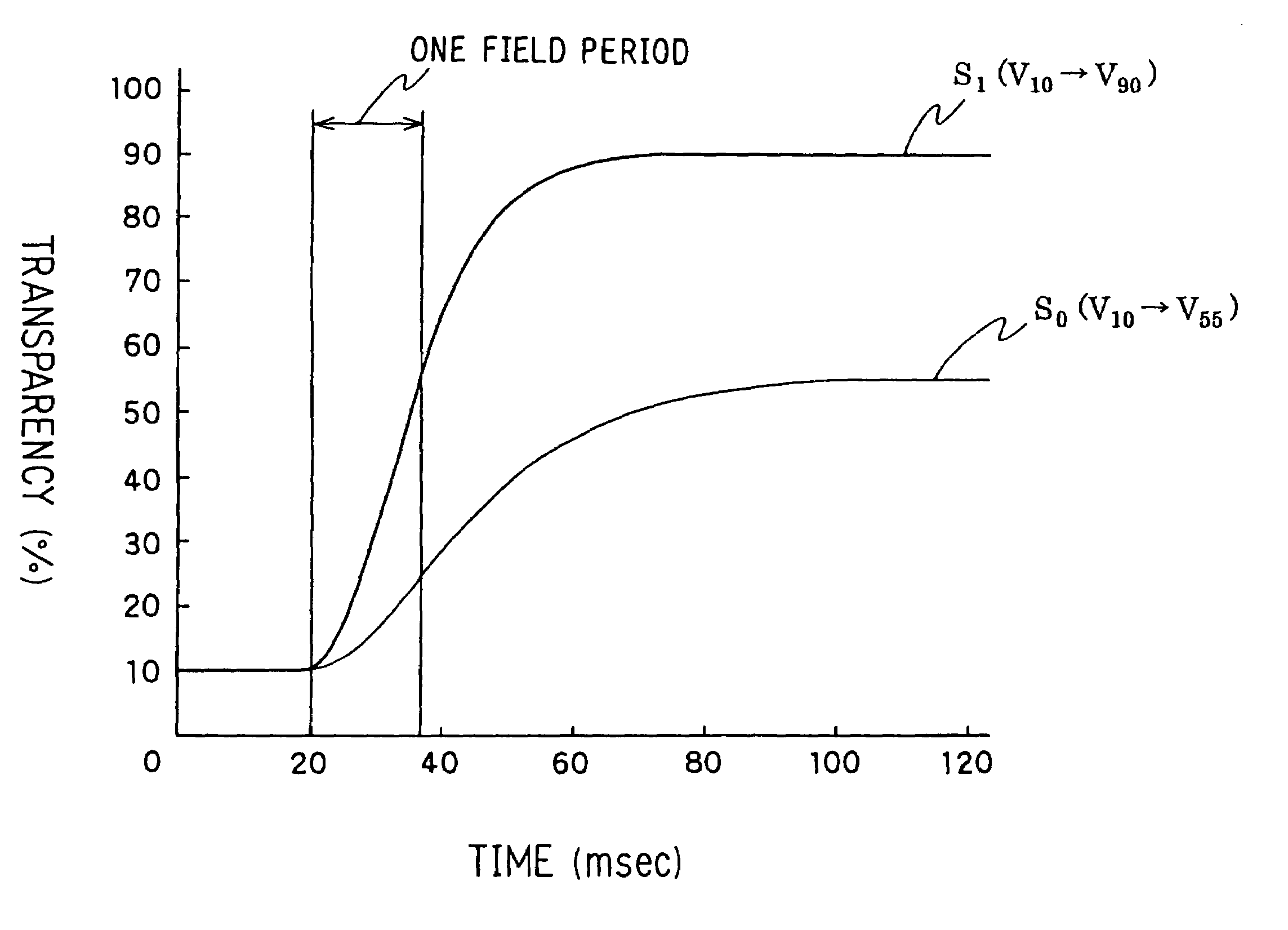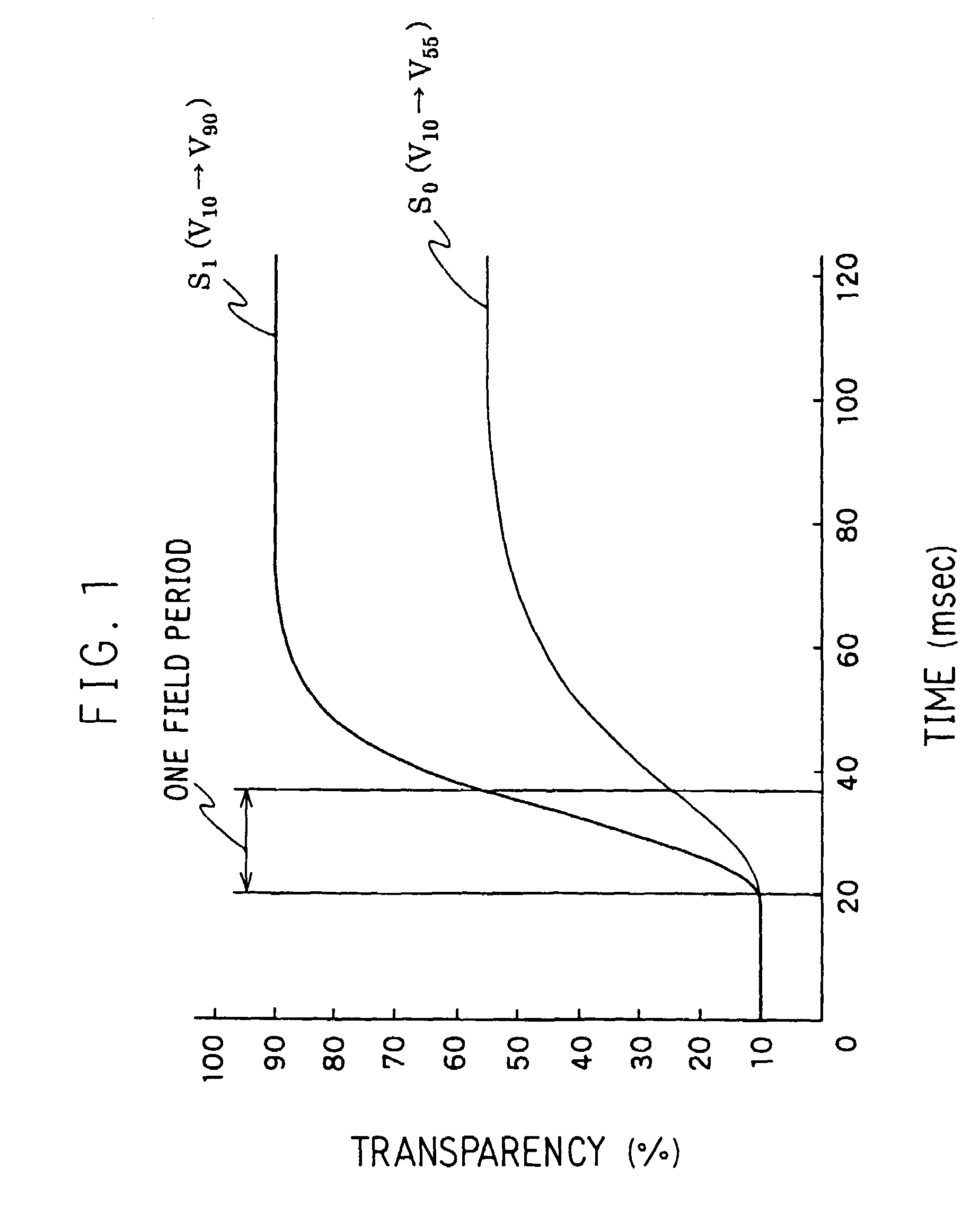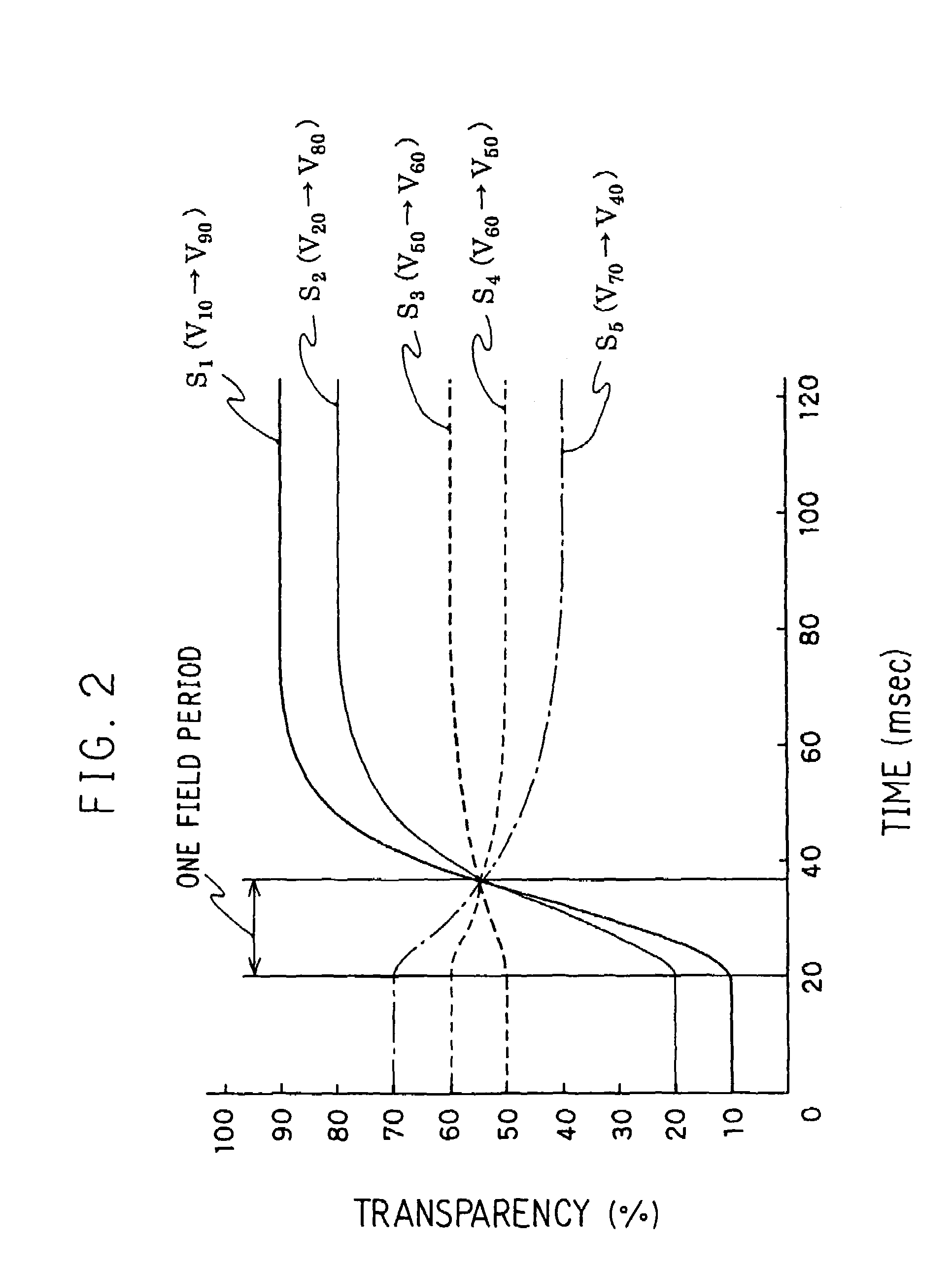Driving circuit and driving method for LCD
a driving circuit and liquid crystal display technology, applied in static indicating devices, instruments, cathode-ray tube indicators, etc., can solve the problems of blurred image, requiring a relatively long time for the orientation change of liquid crystal materials, etc., and achieve the effect of high display quality
- Summary
- Abstract
- Description
- Claims
- Application Information
AI Technical Summary
Benefits of technology
Problems solved by technology
Method used
Image
Examples
embodiment 1
[0037]The description of the first embodiment of the present invention will be given with referring to FIG. 1.
[0038]FIG. 1 shows a relation between an applied voltage and a transparency in a pixel with presenting time (msec) in horizontal axis and transparency (%) in vertical axis. A displayed image is refreshed by a frequency of 60 Hz in most LCDs, so one field period is approximately 16.6 msec in FIG. 1. In FIG. 1, the transparency in a pixel is 10% in preceding field (until 20 msec) and to be changed to 55% in the following current field.
[0039]In the prior art LCDs, as presented by thin line S0 in FIG. 1, a voltage with which the transparency of 55% can be obtained after plenty of time to complete response of liquid crystal material (hereinafter referred as V55) is applied. Thus, the transparency in a pixel shall not reach 55% during the current field, thereby deteriorating the displaying quality for moving image.
[0040]In the present invention, however, a voltage with which trans...
embodiment 2
[0042]FIG. 2 shows a relation between applied voltage and the transparency in a pixel with presenting time in horizontal axis and transparency in vertical axis. In FIG. 2, required voltages at the current field to obtain a desired transparency of 55% are shown in correspondence with various transparencies in preceding field. When the transparency of the preceding field is 20%, applying a voltage of V80, i.e. a voltage whereby transparency of the pixel at the completion of response of liquid crystal material becomes 80%, enables to obtain the transparency of 55% at the end of the current field. Similarly, with each of the transparency of 50%, 60% and 70% of the preceding field, applying a voltage of V60, V50 and V40 enable to achieve the desired transparency of 55% at the end of the current field.
[0043]Thus, a voltage for obtaining desired transparency at the end of the field can be determined by the transparency at the preceding field uniquely. Therefore, it is possible to obtain th...
embodiment 3
[0050]The third embodiment of the present invention will be described with referring to FIGS. 5, 6, 7, 8 and 9. In the present embodiment, a data table for quick response has output data of 256 gradations in correspondence with the preceding and current field image data of 8 gradations selected from 256 gradations. Therefore the required size of data table for quick response is only 64 byte thereby enables to reduce the amount of memory and the number of data line connected to a processor.
[0051]Hereinafter, the operation of a driving circuit according to the present embodiment will be described with attached flow chart. Due to limitations of space, the flow chart is divided into two sheets, i.e. FIG. 5 and FIG. 6, at the points marked with “*1”, “*2”and “*3”.
[0052]Firstly, a frame memory is initialized at step S101, and the image data from a signal source is stored temporally. At this time it is possible to reduce the size of frame memory by storing converted image data in which bit...
PUM
| Property | Measurement | Unit |
|---|---|---|
| frequency | aaaaa | aaaaa |
| transparency | aaaaa | aaaaa |
| transparency | aaaaa | aaaaa |
Abstract
Description
Claims
Application Information
 Login to View More
Login to View More - R&D
- Intellectual Property
- Life Sciences
- Materials
- Tech Scout
- Unparalleled Data Quality
- Higher Quality Content
- 60% Fewer Hallucinations
Browse by: Latest US Patents, China's latest patents, Technical Efficacy Thesaurus, Application Domain, Technology Topic, Popular Technical Reports.
© 2025 PatSnap. All rights reserved.Legal|Privacy policy|Modern Slavery Act Transparency Statement|Sitemap|About US| Contact US: help@patsnap.com



